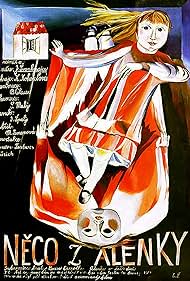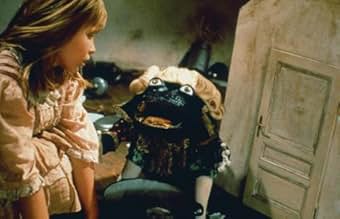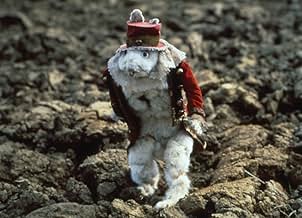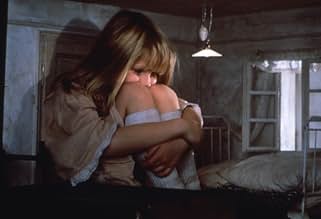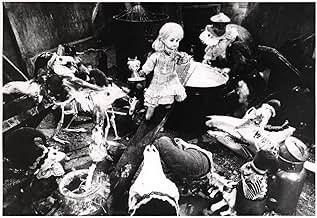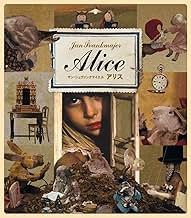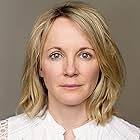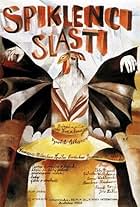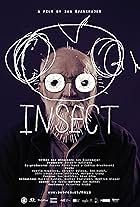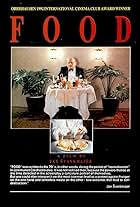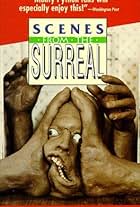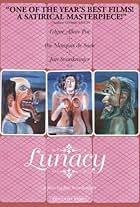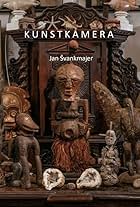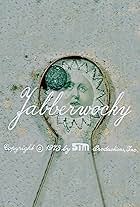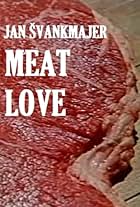A surrealistic revision of Alice in Wonderland.A surrealistic revision of Alice in Wonderland.A surrealistic revision of Alice in Wonderland.
- Director
- Writers
- Stars
- Awards
- 1 win & 1 nomination
Camilla Power
- Alice
- (English version)
- (voice)
- Director
- Writers
- All cast & crew
- Production, box office & more at IMDbPro
Storyline
Did you know
- TriviaDirector Jan Svankmajer had been disappointed by other adaptations of Carroll's book, which interpret it as a fairy tale. His aim was instead to make the story play out like an amoral dream.
- GoofsAfter testing the wooden mushroom fragments, Alice puts the piece that shrinks things in her right pocket and the other that enlarges things in the left one. In the next scene she encounters a tiny house and takes out the right hand fragment to enlarge it.
- ConnectionsFeatured in Brows Held High: Alice (2011)
Featured review
The Alice books are one of the two richest works of literature yet produced. Of the best literature, Alice lends itself to cinematic reinterpretation. And this filmmaker has vision.
But Alice is a coherent work, following the 'apprentice' novel and having kabbalistic structure. This film is episodic, each episode conceived as a different world, connected only by doors. The stories establish an abstract world, a world of logic so pure that the weaknesses of logic are apparent. That's only in part attempted here.
Though in Czech, there is some dainty wordplay: Alice is messing about in her drawers. Initially, these contain drawing equipment, later scissors. The filmmakers' signature 'large person in small room' image is used here in the episode where 'Maryanne' (Alice plus her 'house) is attempted entry by Bill the lizard, Dodgson's image of sperm. Bill is mirrored later in the frog-footman, heavily phallic as is an introduced sequence where the feet themselves become penile, then advisory.
Svenkmajer understands the cards as Tarot, a seldom understood insight and adds a vignette of the March Hare and Hatter playing cards (almost certainly a nod to 'Seventh Seal'). There's some very good visual handling of inside/outside ambiguities, and stage/reality shifting -- this alone makes this project worth sharing. But aside from that, it seems that the magic of Alice's world has yet to be tapped by a filmmaker.
Note: in Carroll's vision, innocence trumps all: logic is seen as manmade and fallible. In this world confabulated reasoning threatens but no one really loses their head. Not so in Svenkmajer's bleak world. Heads really are lost. Innocence is at least dumbfounded and possibly unreal (those socks). Many heads are already decayed with only the skull remaining. Some beings are composed of empty skulls alone or with some ambulatory object. This is not a happy man, nor a world with any sunshine. I would not give these images to any child.
But Alice is a coherent work, following the 'apprentice' novel and having kabbalistic structure. This film is episodic, each episode conceived as a different world, connected only by doors. The stories establish an abstract world, a world of logic so pure that the weaknesses of logic are apparent. That's only in part attempted here.
Though in Czech, there is some dainty wordplay: Alice is messing about in her drawers. Initially, these contain drawing equipment, later scissors. The filmmakers' signature 'large person in small room' image is used here in the episode where 'Maryanne' (Alice plus her 'house) is attempted entry by Bill the lizard, Dodgson's image of sperm. Bill is mirrored later in the frog-footman, heavily phallic as is an introduced sequence where the feet themselves become penile, then advisory.
Svenkmajer understands the cards as Tarot, a seldom understood insight and adds a vignette of the March Hare and Hatter playing cards (almost certainly a nod to 'Seventh Seal'). There's some very good visual handling of inside/outside ambiguities, and stage/reality shifting -- this alone makes this project worth sharing. But aside from that, it seems that the magic of Alice's world has yet to be tapped by a filmmaker.
Note: in Carroll's vision, innocence trumps all: logic is seen as manmade and fallible. In this world confabulated reasoning threatens but no one really loses their head. Not so in Svenkmajer's bleak world. Heads really are lost. Innocence is at least dumbfounded and possibly unreal (those socks). Many heads are already decayed with only the skull remaining. Some beings are composed of empty skulls alone or with some ambulatory object. This is not a happy man, nor a world with any sunshine. I would not give these images to any child.
- How long is Alice?Powered by Alexa
Details
- Runtime1 hour 26 minutes
- Sound mix
- Aspect ratio
- 1.37 : 1
Contribute to this page
Suggest an edit or add missing content

